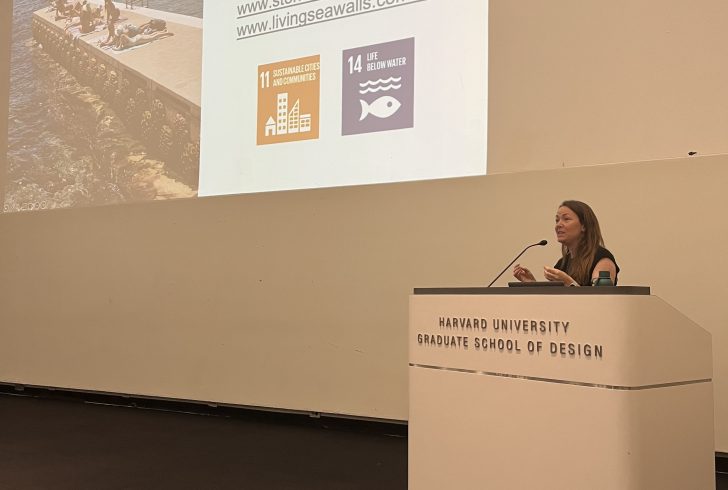Design Discovery at Harvard Graduate School of Design


by: Katie Dafforn
Each summer, the Design Discovery Program at the Harvard Graduate School of Design (GSD) offers an intensive introduction to architecture, landscape architecture, and urban planning for students from non-design backgrounds. It’s a hands-on experience that gives participants a taste of graduate-level design education and a chance to explore how the built environment intersects with broader ecological and social systems.
This July, I had the opportunity to speak with the Design Discovery cohort about the work of the Stone Living Lab, with a focus on Living Seawalls and nature-based approaches to coastal infrastructure. The students were about a third of the way through their design projects, many of which focused on flooding vulnerability in East Boston.
We explored two key themes:
The visit to GSD was especially meaningful because it’s where the Stone Living Lab was first imagined. The Lab has evolved from a design charrette hosted at the GSD, which brought together thought leaders from across disciplines to reimagine Boston’s waterfront in the face of climate change. That early collaboration laid the foundation for the Lab’s mission to test and advance nature-based solutions. It was a pleasure to contribute to that learning space and to see students engaging critically with the complexities of coastal design.
Thanks to the program team for the invitation and to the students for their thoughtful questions and creative energy. Excited to see how this next generation of designers will shape the future of our coasts.